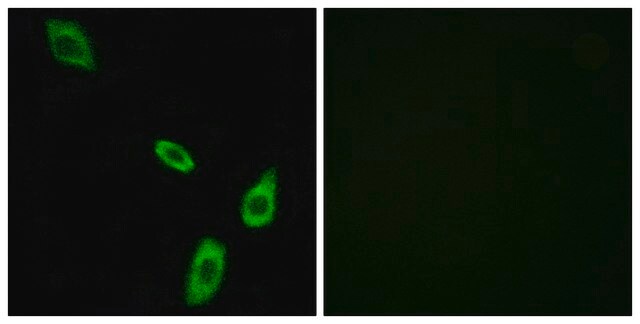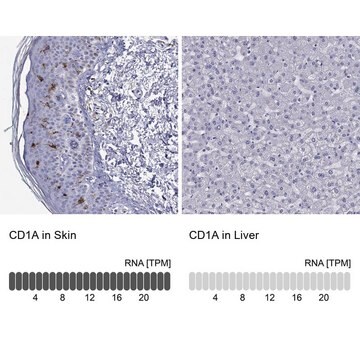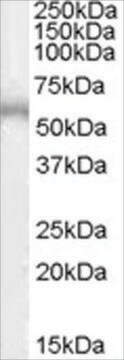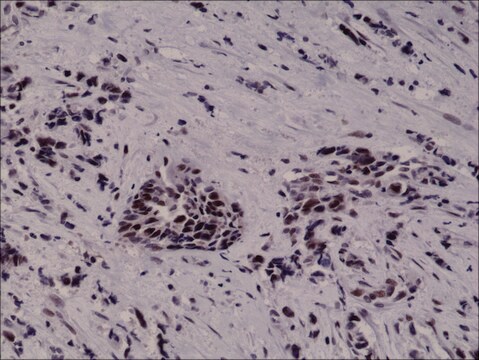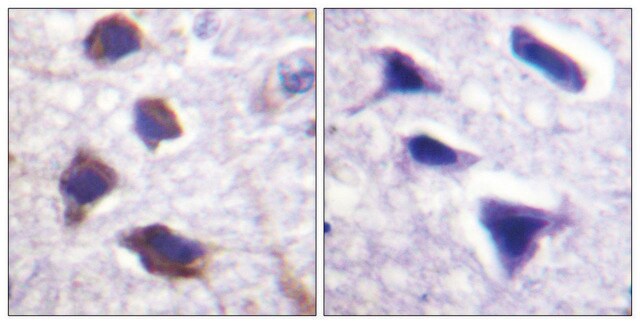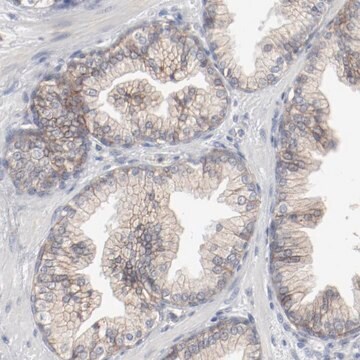General description
We are committed to bringing you greener alternative products, which adhere to one or more of The 12 Principles of Green Chemistry.This antibody is Preservative-free, produced without the harm or sacrifice of animals and exceptionally stable to allow for ambient shipping and storage if needed and thus aligns with "Waste Prevention", "Designing Safer Chemicals" and "Design for Energy Efficiency".
Click here for more information.
ZooMAb® antibodies represent an entirely new generation of recombinant monoclonal antibodies. Each ZooMAb® antibody is manufactured using our proprietary recombinant expression system, purified to homogeneity, and precisely dispensed to produce robust and highly reproducible lot-to-lot consistency. Only top-performing clones are released for use by researchers. Each antibody is validated for high specificity and affinity across multiple applications, including its most commonly used application. ZooMAb® antibodies are reliably available and ready to ship when you need them.
Specificity
Clone 2B23 is a ZooMAb® rabbit recombinant monoclonal antibody that specifically detects β2-Adrenergic Receptor. It targets an epitope within 19 amino acids in the first extracellular domain from the N-terminal region.
Immunogen
KLH-conjugated linear peptide corresponding to 19 amino acids from the first extracellular domain of human β2-Adrenergic Receptor.
Application
Quality Control Testing
Evaluated by Western Blotting in ACHN cell lysate.
Western Blotting Analysis: A 1:1,000 dilution of this antibody detected β2-Adrenergic Receptor in ACHN cell lysate.
Tested Applications
Western Blotting Analysis: A 1:1,000 dilution from a representative lot detected β2-Adrenergic Receptor in HepG2 cell lysate.
Affinity Binding Assay: A representative lot of this antibody bound β2-Adrenergic Receptor peptide with a KD of 1.2 x 10-7 in an affinity binding assay.
Immunohistochemistry (Paraffin) Analysis: A 1:100 dilution from a representative lot detected β2-Adrenergic Receptor in human heart tissue sections.
Immunocytochemistry Analysis: A 1:100 dilution from a representative lot detected β2-Adrenergic Receptor in HepG2 cells.
Note: Actual optimal working dilutions must be determined by end user as specimens, and experimental conditions may vary with the end user.
Target description
Beta-2 adrenergic receptor (UniProt: P07550; also known as Beta-2 adrenoreceptor, Beta-2 adrenoceptor) is encoded by the ADRB2 (also known as ADRB2R, B2AR) gene (Gene ID: 154) in human. β-adrenergic receptors are activated by the catecholamines (norepinephrine and epinephrine) and are family of the 7-transmembrane superfamily of receptors. Three distinct β adrenergic receptors have been described: β1, β2, and β3. They are identified in cardiac, airway smooth muscle, and adipose tissue, respectively and display about 65% to 70% homology. β2-adrenergic receptor is a multi-pass membrane glycoprotein with four extracellular domains, seven transmembrane domains, and four cytoplasmic domains. It mediates the catecholamine-induced activation of adenylate cyclase that results in the production of cyclic AMP and subsequent activation of protein kinase A (PKA). Most of the downstream effects of β-adrenergic receptor activation are due to the action of PKA. Activation of β2 receptor causes smooth muscle relaxation, peripheral vasodilation, and subsequent hypotension. It is palmitoylated at cysteine 341, which reduces accessibility of phosphorylation sites by anchoring the receptor to the plasma membrane. Agonist stimulation of β-adrenergic receptors promote de-palmitoylation and allows phosphorylation of serine 345 and 346. Phosphorylation of β2 receptor by PKA and β-adrenergic receptor kinase (BARK) mediates homologous desensitization of the receptor. PKA-mediated phosphorylation appears to facilitate phosphorylation by BARK. This ZooMAb® recombinant monoclonal antibody, generated by our propriety technology, offers significantly enhanced specificity, Affinity™, reproducibility, and stability over conventional monoclonals. (Ref.: Johnson, M. (2006). J. Allergy Clon. Immunol. 117(1); 18-24; Moffett, S., et al. (2001). J. Neurochem. 76(1); 269-279; O′Dowd, BF., et al. (1989). J. Biol. Chem. 264(13); 7564-7569).
Physical form
Purified recombinant rabbit monoclonal antibody IgG, lyophilized in PBS, 5% Trehalose, normal appearance a coarse or translucent resin. The PBS/trehalose components in the ZooMAb formulation can have the appearance of a semi-solid (bead like gel) after lyophilization. This is a normal phenomenon. Please follow the recommended reconstitution procedure in the data sheet to dissolve the semi-solid, bead-like, gel-appearing material. The resulting antibody solution is completely stable and functional as proven by full functional testing. Contains no biocide or preservatives, such as azide, or any animal by-products. Larger pack sizes provided as multiples of 25 µL.
Reconstitution
300 µg/mL after reconstitution at 25 µL per vial. Please refer to guidance on suggested starting dilutions and/or titers per application and sample type.
Storage and Stability
Recommend storage of lyophilized product at 2-8°C; Before reconstitution, micro-centrifuge vials briefly to spin down material to bottom of the vial; Reconstitute each vial by adding 25 µL of filtered lab grade water or PBS; Reconstituted antibodies can be stored at 2-8°C, or -20°C for long term storage. Avoid repeated freeze-thaws.
Other Notes
Concentration: Please refer to the Certificate of Analysis for the lot-specific concentration.
Legal Information
Affinity is a trademark of Mine Safety Appliances Co.
ZooMAb is a registered trademark of Merck KGaA, Darmstadt, Germany
Disclaimer
Unless otherwise stated in our catalog or other company documentation accompanying the product(s), our products are intended for research use only and are not to be used for any other purpose, which includes but is not limited to, unauthorized commercial uses, in vitro diagnostic uses, ex vivo or in vivo therapeutic uses or any type of consumption or application to humans or animals.

